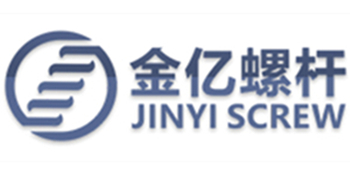
Privacy statement: Your privacy is very important to Us. Our company promises not to disclose your personal information to any external company with out your explicit permission.

The performance of an extruder is significantly influenced by the interplay between its two key components: the screw and the barrel. The quality of their operation directly affects material plasticization, product quality, and overall production efficiency. The effectiveness of these components is closely tied to their manufacturing precision and the assembly tolerances maintained during installation. When wear occurs in either part, leading to reduced output, timely maintenance becomes essential.
Friction and Wear: As the screw rotates within the barrel, friction between the material and both components leads to gradual wear. This results in a decrease in the screw's diameter and an increase in the barrel's inner diameter over time. As the gap between the screw and barrel widens, the resistance presented by the front head and splitter plate remains unchanged, causing an increase in leakage flow. Consequently, this leakage reduces the extruder's production capacity and can extend the material's residence time in the barrel, potentially leading to material decomposition. For instance, when processing polyethylene, the decomposition can generate hydrogen chloride gas, which further exacerbates corrosion of the screw and barrel.
Presence of Fillers: Materials containing fillers, such as calcium carbonate or glass fibers, can accelerate wear on both the screw and barrel.
Uneven Plasticization: If the material is not uniformly plasticized or if foreign metallic objects contaminate the material, it can cause a sudden spike in the torque exerted on the screw. This excessive torque can surpass the screw's strength limits, resulting in breakage—a scenario considered an atypical failure.
Replacement Considerations: When a screw breaks, it is crucial to match the new screw’s outer diameter to the actual inner diameter of the barrel, taking into account the appropriate clearance.
Surface Treatment: For screws that have experienced wear, a common repair method involves treating the worn thread surface with a wear-resistant alloy through thermal spraying, followed by grinding to the correct dimensions. This repair is typically performed by specialized facilities and is cost-effective.
Alloy Surfacing: Another option is to apply a layer of wear-resistant alloy on the worn thread area, building up to a thickness of 1 to 2 mm based on the wear extent. The alloy, which may include elements like carbon, chromium, vanadium, cobalt, tungsten, and boron, enhances both wear and corrosion resistance. However, this method can be costly and is generally reserved for specific requirements.
Hard Chrome Plating: Alternatively, screws can be repaired using hard chrome plating, which provides wear and corrosion resistance. However, this method has a drawback, as the hard chrome layer may be prone to delamination.
The barrel typically experiences wear at a slower rate than the screw due to its harder surface. However, once the inner diameter increases significantly due to wear, repairs are necessary:
Boring and Grinding: If the barrel's inner diameter has expanded, and it has a nitrided layer, the barrel can be bored and ground to a new diameter, allowing for the installation of a new screw that fits correctly.
Recasting Alloy: Another method involves machining the barrel's inner diameter and applying a recast alloy layer of 1 to 2 mm thickness, which is then finished to the desired size.
Nitrided Steel Bushing: The homogenization section of the barrel, which tends to wear faster, can be reworked by boring and fitting a nitrided alloy steel bushing, ensuring that the inner hole's diameter aligns with the screw’s diameter for proper fitting.
It is essential to recognize that both the screw and barrel are complex components with intricate machining and heat treatment processes that can be challenging to execute with precision. Therefore, after either part has been worn down and subsequently repaired or replaced, a thorough economic evaluation should be conducted. If the cost of repair is less than the cost of a new screw, repair may not always be the optimal choice. A comprehensive analysis should include the ratio of repair costs to the expected lifespan of the repaired component versus the cost of acquiring new parts.
In terms of material choices, commonly used materials for screws and barrels in domestic applications include 45, 40Cr, and 38CrMoAlA. In contrast, imported extruders often utilize high-performance alloy steels such as 34CrAINi7 and CrMoV9. These materials typically exhibit a yield strength of around 900 MPa and, after nitriding treatment, achieve hardness levels exceeding 1000 HV, offering excellent wear and corrosion resistance.
In summary, the effective functioning of screws and barrels is critical to the performance of extruders. Understanding the causes of wear, repair options, and material selection can help maintain production efficiency and product quality while minimizing downtime and costs.
December 25, 2024
December 12, 2024
May 02, 2024
이 업체에게 이메일로 보내기
December 25, 2024
December 12, 2024
May 02, 2024
November 05, 2024

Privacy statement: Your privacy is very important to Us. Our company promises not to disclose your personal information to any external company with out your explicit permission.

Fill in more information so that we can get in touch with you faster
Privacy statement: Your privacy is very important to Us. Our company promises not to disclose your personal information to any external company with out your explicit permission.